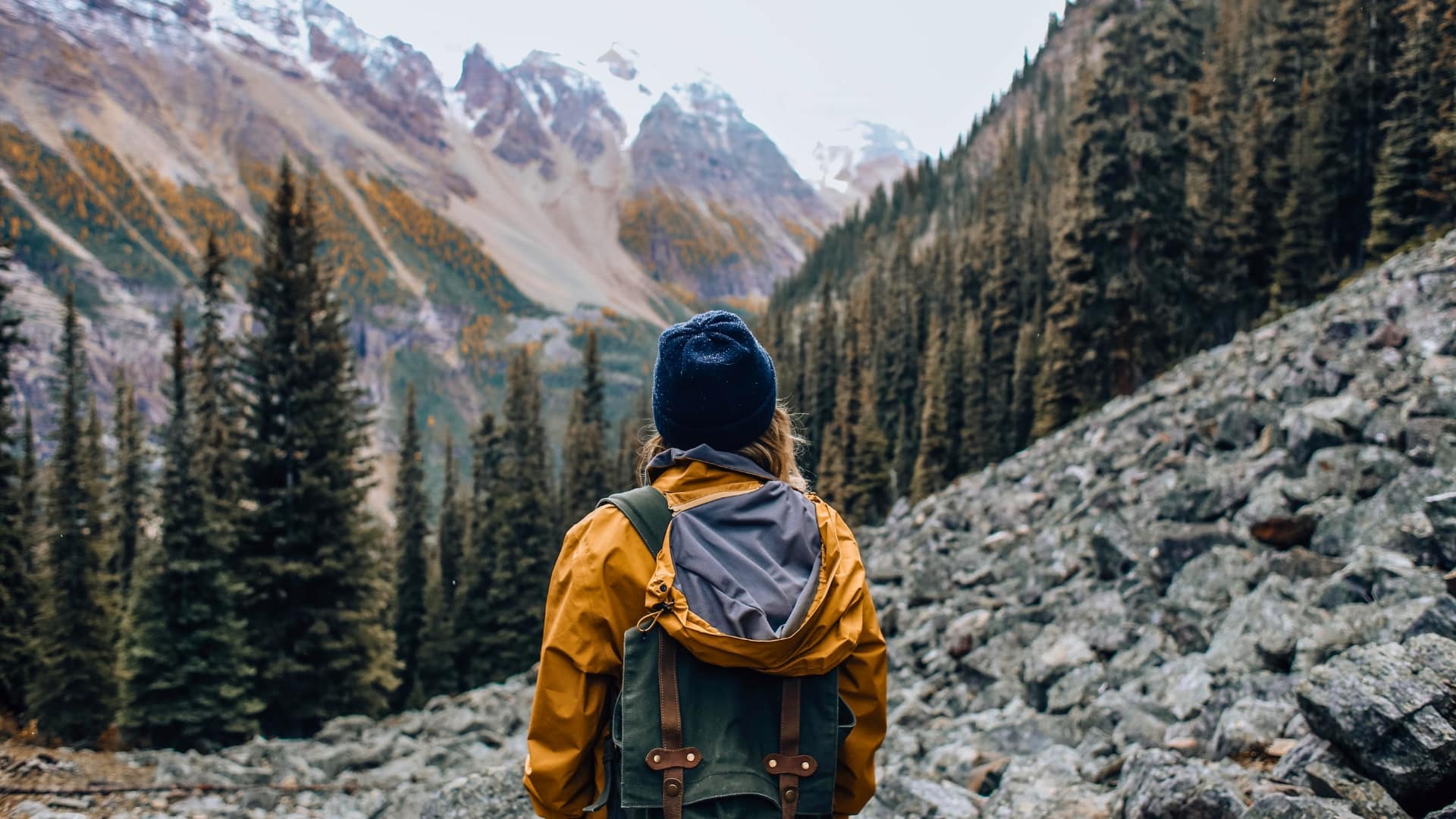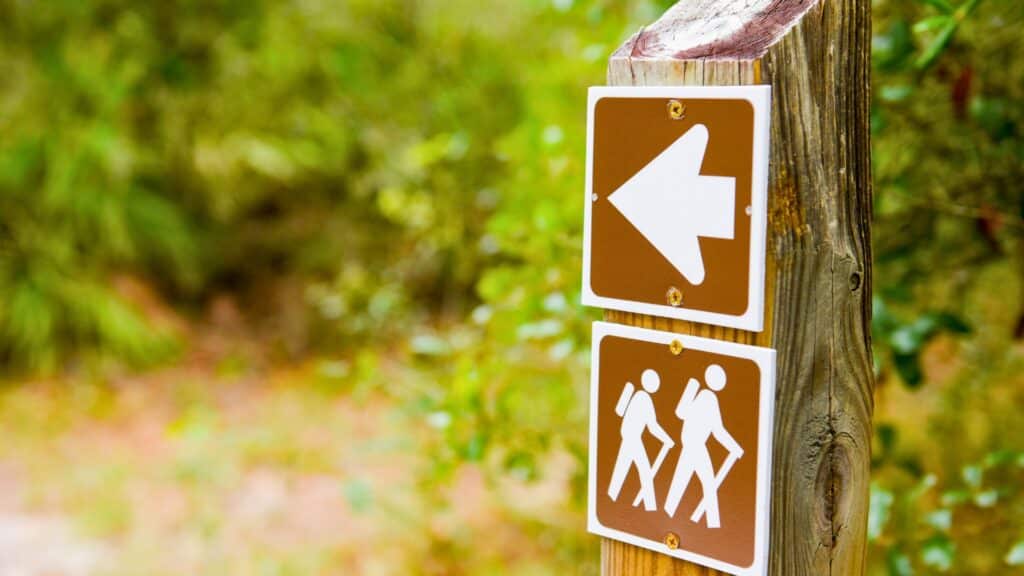
Have you ever wondered how to start backpacking? Fortunately, getting started isn't as difficult as you might think.
In this guide, you'll learn how to choose the right gear, plan your route, and prepare physically for the trails. We'll cover essential tips to keep you safe and comfortable, ensuring your backpacking experience is both enjoyable and memorable.
Dive in and discover how to transform your wilderness dreams into reality!

Selecting the right gear is crucial for a successful and enjoyable backpacking adventure. Start by focusing on essential backpacking gear such as a backpack, tent, sleeping bag, sleeping pad, and a stove.
Opt for lightweight and compact gear to keep your pack weight manageable and make your journey more comfortable. Lightweight tents and sleeping bags are game-changers; they save space and reduce the strain on your back.
Don't overlook the importance of quality gear. Investing in well-made items ensures they'll withstand the elements and provide the support you need. Look for reputable brands and read reviews to find the best options. Your hiking boots are particularly important; they need to be sturdy, well-fitted, and broken in before you hit the trail to prevent blisters and discomfort.
Another vital component of your backpacking gear is water treatment. Whether you choose a filter, chemical treatment, or UV light, ensuring you have safe drinking water is non-negotiable.
Additionally, pack items like a headlamp for visibility and navigation tools to stay on track. With the right gear, you'll be well-prepared for an enjoyable and safe backpacking experience.

When planning your backpacking route, start by researching trail options based on distance, elevation gain, and available amenities. Use apps like Gaia GPS, AllTrails, Hiking Project, and Komoot to gather detailed route information. These tools allow you to see maps, read trip reports, and get a sense of what to expect on the trail.
First, choose a trail that matches your fitness level. Plan a backpacking trip that covers around 5 miles per day, especially if you're a beginner. Gradual elevation gain will help you build endurance without overwhelming you. Look for trails that have well-marked paths and consider the availability of campsites and restrooms.
Water sources are crucial. Ensure the trail you select has reliable water sources at reasonable intervals. This makes it easier to stay hydrated without carrying excessive water weight. Check trip reports for recent information on water availability and trail conditions. Experienced backpackers often share valuable insights that can help you avoid pitfalls.

Before hitting the trail, make sure you've packed essential items like your tent, sleeping bag, and enough food to sustain you throughout the trip. Your shelter is crucial; a lightweight tent will protect you from the elements and provide a cozy place to rest.
Equally important is your sleep system, which includes a sleeping bag appropriate for the expected temperatures and a sleeping pad for comfort and insulation from the ground.
When backpacking, versatile clothing is a must. Pack layers that you can add or remove as the weather changes. Opt for moisture-wicking fabrics to stay dry and comfortable. A good rule of thumb is to have a base layer, insulating layer, and waterproof outer layer.
Don't forget essentials like a headlamp for night visibility, a trowel and toilet paper for hygiene, and camp shoes to give your feet a break from hiking boots.
Consider the weight and functionality of each item to keep your backpack manageable. Avoid packing unnecessary items and focus on efficiency. Remember, every ounce counts when you're on the trail, so prioritize packing essentials to ensure a successful and enjoyable backpacking adventure.

To prepare your body for the physical demands of backpacking, start integrating regular cardiovascular exercise like hiking, running, or cycling into your routine. Building your endurance is crucial, as you'll need sustained energy for long days on the trail. Aim for at least three cardio sessions per week to get your heart and lungs in shape.
Don't overlook strength training. Focus on exercises that target your legs, core, and back, as these muscles will carry the brunt of your backpacking load. Squats, lunges, and planks are excellent choices. Incorporate strength training two to three times a week to build the necessary muscle support.
Training hikes are vital. Gradually increase the weight in your backpack to simulate the load you'll carry on your trip. Start with a lighter pack and progressively add more weight. This will help condition your body and ensure you're comfortable handling a full pack.
Hike on varied terrain to prepare your muscles and joints for different challenges. Trails with uneven surfaces, inclines, and declines will better mimic actual backpacking conditions.
Consider working with a personal trainer if you need a more tailored approach. They can create a customized training plan that aligns with your fitness level and backpacking goals.

Sharing your itinerary with a trusted friend or family member ensures someone knows your whereabouts in case of an emergency. This simple step in itinerary sharing can be a lifesaver if things don't go as planned.
Equally important is taking a wilderness first aid course. Knowing how to handle injuries or illnesses in remote areas boosts your emergency preparedness and confidence on the trail.
Before you head out, lay out all your gear and go through a thorough gear checklist. Make sure you've got essentials like a first aid kit, map, compass, and adequate clothing to protect from extreme temperatures. Keep your gear organized to ensure you don't forget anything crucial.
Planning alternative routes and backup plans is another vital trail safety tip. Trails can change unexpectedly due to weather or other factors, so having a Plan B keeps you prepared. Always be aware of your surroundings and stay hydrated to prevent heat-related issues.
Lastly, protect yourself from extreme temperatures by dressing in layers and packing appropriately for the weather.
These trail safety tips, combined with sound emergency preparedness and a solid gear checklist, will make your backpacking adventure both safe and enjoyable.
You've got this! With the right gear, a well-planned route, and essential items packed, you're ready to embrace the adventure of backpacking.
Stay physically prepared, prioritize safety, and always respect nature by following Leave No Trace principles.
Communicate with your hiking buddies, stay open-minded, and enjoy every moment on the trail. Now, go out there and create unforgettable memories in the great outdoors. Happy backpacking!
The 20% rule for backpacking suggests you carry a pack weighing around 20% of your body weight. This helps you stay comfortable and avoid strain. For example, if you weigh 150 pounds, your pack should be about 30 pounds.
For a beginner backpacking trip, aim for around 5 miles per day. This distance helps you get used to carrying a loaded pack while ensuring the experience remains enjoyable and not too strenuous.
To be a backpacker, you'll need an initial investment of $500 to $1000 for gear. Daily expenses can range from $50 to $100, depending on your choices. Budget for unexpected costs to ensure a smooth trip.
